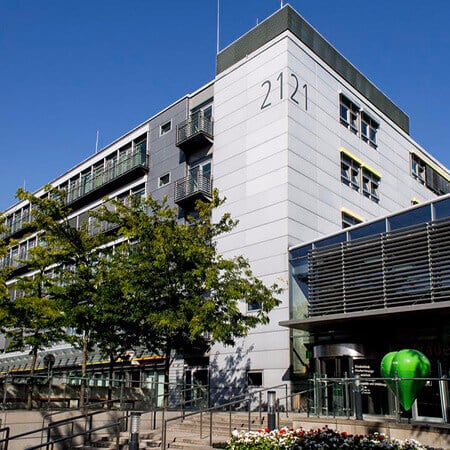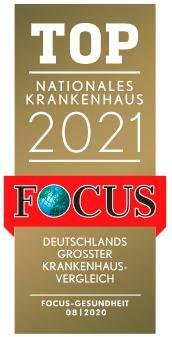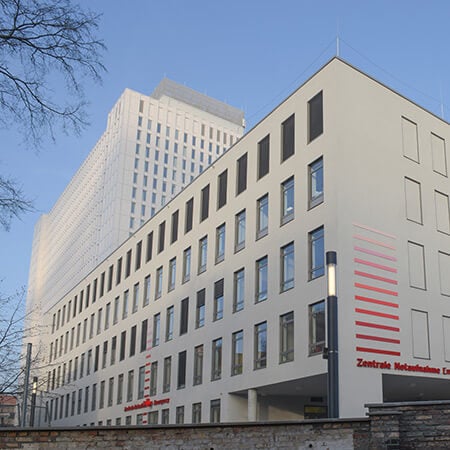Esophageal cancer is the eighth most common cancer in the world. According to Globocan, 456 new cases and 400,000 deaths from this pathology are diagnosed annually. The main treatment for esophageal cancer is surgery. It can be used alone or as one of the components of a combination treatment. Many patients undergo radiation therapy or receive chemotherapy. In cancer beyond the stage 1-3, doctors use targeted therapy, immunotherapy, as well as endoscopic procedures to restore esophageal patency.
Content
- Surgical treatment
- Radiation therapy
- Drug therapy
- Palliative endoscopic treatment
- Treatment in Europe with Booking Health
Surgical treatment
Surgery for esophageal cancer is the most effective treatment for this disease. It is the only possible way to cure the disease completely.
The first surgery to remove part of the esophagus was performed back in 1872. A century and a half later, intrathoracic esophageal resection with simultaneous plastic repair has become a standard operation. In the 21st century, more and more surgeons prefer minimally invasive techniques: laparoscopy and thoracoscopy. In 2017 the first randomized trial on robot-assisted surgery for esophageal cancer was completed.
The surgical treatment of the disease is technically complex and unsafe. To get the best oncological results and avoid health consequences, it is better to treat the disease in a good hospital, in one of the countries with advanced medicine. The success rates for operations vary from hospital to hospital and country to country. Mortality of patients during surgery ranges from 2 to 20%. The risk of complications ranges from 15 to 65%.
What surgical interventions can be performed for esophageal cancer?
Any surgery for the treatment of esophageal cancer includes two stages:
- tumor removal;
- formation of a new esophagus.
Multi-stage interventions, when the tumor was first removed and then the esophagus was restored, have gone down in history. They turned out to be unsafe and not effective enough.
Esophagectomy is the most common surgery for esophageal cancer. It involves the removal of most of this organ, along with the surrounding tissues and lymph nodes. After the resection stage, the upper part of the esophagus is connected to the rest of the stomach. A part of the stomach is pulled into the chest cavity to form a new esophagus.
If the removed section of the organ is too large, the doctor uses the piece of intestine to reconstruct the esophagus. It is important to move fragments with intact vessels. Otherwise, the probability of developing tissue necrosis due to poor blood supply increases.
There are the following surgical approaches:
- open (a large incision on the abdomen, chest, neck, or in several sites at once);
- minimally invasive (thoracoscopy, laparoscopy, robot-assisted surgery).
The choice depends on the location, size of the tumor, as well as the preferences and skills of the surgeon, and the technical capabilities of the health facility.
Lymphadenectomy is an obligatory stage of radical operation. The doctor must remove at least 15 lymph nodes in order to examine them for cancer. It is both diagnostic and treatment. By checking the lymph nodes for cancer, specialists can determine the exact stage of the disease and plan postoperative treatment. By removing potential sources of cancer metastases, doctors thereby reduce the likelihood of malignancy recurrence.
Minimally invasive surgery
Increasingly, doctors prefer minimally invasive interventions through short incisions. Their benefits have already been proven in trials.
Instead of a large incision in the chest or abdomen, surgeons perform the surgery through short skin incisions. As a result, the trauma of the operation is reduced. Patients suffer fewer complications, lose less blood, and leave the hospital faster. The postoperative period is easier, the need for painkillers decreases.
In the TIME Trial, researchers compared minimally invasive and open esophageal surgery. It turned out that in the group of minimally invasive interventions, blood loss was more than twice as low. The level of pulmonary complications decreased by almost three times. Mortality within 30 days was only 2%. There were no differences in survival rates. It suggests that, with comparable effectiveness, minimally invasive treatment is safer for health. At the same time, it is technically more complex, requiring special equipment and highly qualified surgeons. Therefore, patients often have to travel abroad to receive minimally invasive treatment, visiting countries with advanced medicine.
Robot-assisted surgery
Robot-assisted operations are the most sparing and safe for health. The first robotic surgical system was created in 1997 by Intuitive Surgical Inc. to simplify laparoscopic surgery. The system was called the da Vinci Surgical System. Today, robotic techniques are used for esophageal tumor removal.
Robot-assisted surgery has many advantages:
- three-dimensional visualization of the surgical field;
- more degrees of freedom for surgical instruments;
- comfortable position of the surgeon;
- minimal risk of developing complications associated with the human factor.
The popularity of robot-assisted surgery is rapidly growing. Over the past 5 years, the number of surgical interventions has increased by 5 times. There are already thousands of robotic surgical systems installed throughout the world, mostly in the USA and Western Europe.
In 2017, the results of the world's first trial on esophageal cancer treatment with a robotic surgical system were published. The authors from Utrecht described 31 clinical cases. The patients underwent minimally invasive thoraco-laparoscopic esophagectomy. The surgery was performed through short incisions in the chest and abdomen. In 97% of cases (in 30 out of 31 patients), doctors managed to achieve R0 degree of radicalization, which means complete tumor removal.
At the 14th World Congress on Diseases of the Esophagus (OESO), which was held in Geneva in September 2017, the results of minimally invasive robot-assisted esophagectomy in the world's leading hospitals were presented. Hundreds of clinical cases have been described, compared with "manual" thoracoscopic operations. Robot-assisted interventions were characterized by a lower risk of complications and a shorter period of hospitalization for patients.
Intraluminal endoscopic surgery
Radical endoscopic operations are used only for superficial esophageal neoplasms at the earliest stages. Doctors perform one of two surgical procedures:
- endoscopic mucosal resection;
- submucosal dissection.
Endoscopic submucosal dissection is considered more effective. The affected area of the mucous membrane is lifted by fluid injection and then resected with an electrosurgical instrument.
Endoscopic treatment is minimally traumatic and safe. Approximately one in six patients develop esophageal stenosis, which is an impaired esophageal patency due to scarring. In the event of complications, a person will need additional treatment that will also be endoscopic. However, this method is much safer than esophageal removal surgery. Mortality in endoscopic treatment is close to zero. Modern technologies make it possible to perform en bloc resection of early-stage tumors, which ensures the cure of most patients. The five-year survival rate after such operations is at least 80%, and in the best hospitals in the world it reaches 93%.
Less often, photodynamic therapy is used to treat the early stages of cancer. It is used when two conditions are combined:
- the disease cannot be cured by endoscopic submucosal dissection;
- surgery of removal of the esophagus is contraindicated because of the presence of diseases of the internal organs (this is about 25% of patients).
Failure to dissect is usually associated with annular lesions extending to more than two-thirds of the esophagus.
The method of photodynamic therapy is based on the use of light-activated photosensitizers. The doctor injects into the patient's body a substance that accumulates in cancer cells. He then introduces a light source into the esophagus. With local laser irradiation with light of a certain wavelength (at the photosensitizer absorption maxima), a photochemical reaction begins in the tumor. The result is the formation of singlet oxygen and oxygen-free radicals that have a toxic effect on malignant cells. As a result, the neoplasm is completely destroyed. The procedure is used both for the radical treatment of early-stage cancer and as a palliative care option for esophageal obstruction in the advanced stages of the disease.
Radiation therapy
Radiation is one of the main treatment options for esophageal cancer. Radiation therapy may be conducted at the same time as chemotherapy. In this case, it is called chemoradiation therapy. This combination is less tolerated, more likely to cause health effects, but at the same time it is more effective. Therefore, chemoradiotherapy is the treatment of choice for cancer for those who can tolerate it.
Below are some cases in which the doctor will treat the disease with radiation therapy:
- Inoperable tumor. Most cases of esophageal cancer are found at a stage where radical surgery cannot be performed. For such patients, chemoradiotherapy becomes the main treatment option. Such treatment will help to restrain the disease development for some time.
- Prior to surgery. This cancer treatment is called neoadjuvant. The task of doctors is to reduce the neoplasm in size. In some cases, it is possible to make cancer resectable, which, as it was originally thought, could not be removed surgically.
- After surgery. This cancer treatment is called adjuvant. It is carried out to kill any remaining cancer cells and prevent recurrent cancer.
- At the advanced stage. Palliative radiotherapy is faster, uses lower doses of radiation, and is therefore safer for health. The main task is to reduce the risk of complications and relieve symptoms. At the same time, an increase in life expectancy is achieved, but this goal is not considered the main one.
Types of radiation therapy for cancer:
- external beam radiation therapy is the main method for esophageal cancer treatment, in which the radiation source is located outside the human body;
- brachytherapy involves the delivery of radioactive materials directly to the tumor, and it is used only in the advanced stages of cancer, with a palliative purpose.
Brachytherapy is an invasive method. The doctor needs to place radioactive seeds inside the esophagus to destroy the part of the tumor that is blocking the lumen of the organ. However, this treatment method is safer for your health. The rays on the way to the tumor do not pass through healthy tissues. Accordingly, they are not damaged by radiation, and the risk of complications is lower. The radiation that radioactive seeds give is very short. It affects only the tumor, but does not harm the surrounding organs.
The main method of external beam radiation therapy in countries with advanced medicine is IMRT. This type of radiation therapy for cancer uses less radiation to the organs surrounding the esophagus. The doctor may reduce the radiation dose to critical structures to reduce the risk of complications.
In recent years, proton therapy has been increasingly used. Protons are safer than photons since they almost do not scatter radiation on their way to the target. They release most of the energy after reaching the tumor. As a result, cancer treatment becomes safer.
Drug therapy
Most patients with esophageal cancer receive chemotherapy. It can be carried out in the following situations:
- after surgery – adjuvant chemotherapy is usually used together with radiation therapy to reduce the risk of cancer recurrence;
- before surgery – neoadjuvant chemotherapy is used to shrink the tumor and lower the stage of the disease so that the doctor can remove the tumor completely;
- as the main treatment method – chemotherapy together with radiation therapy helps to control cancer if surgery cannot be performed.
Chemotherapy is usually carried out with a combination of three drugs. For example, ECF and DCF chemotherapy regimens are used.
Other drug treatment options include:
- targeted therapy;
- immunotherapy.
Targeted therapy, unlike chemotherapy, does not affect all cells of the body, but only cancer cells that have certain mutations in the genes. Malignant esophageal neoplasms are treated with the following medications:
- HER2 inhibitors are administered once every 3 weeks, in combination with chemotherapy;
- VEGF inhibitors are used once every 2 weeks, usually in situations where chemotherapy is no longer effective;
- TRK inhibitors are used in patients with NTRK gene mutations, in case of chemotherapy failure.
To treat cancer with immunotherapy, foreign doctors use immune checkpoint inhibitors. These are drugs from the group of PD-1 inhibitors. They enhance the antitumor immune response. Immunotherapy is usually used when other treatment options do not work or are contraindicated.
Palliative endoscopic treatment
Advanced-stage tumors block the esophagus. As a result, the person cannot eat. Palliative minimally invasive procedures are performed to eliminate dysphagia. They are performed from the inside of the esophagus using endoscopic techniques. Doctors have at their disposal the following types of treatment:
- balloon dilatation – expansion of the organ with an inflating balloon;
- bougienage – the introduction of bougie with a gradual increase in diameter;
- high-frequency and bipolar electrocoagulation, argon plasma coagulation, laser destruction for tumor destruction;
- ethanol injections into the tumor;
- photodynamic therapy;
- stenting with self-expanding metal stents.
Regardless of which method of restoring the esophageal patency the doctor chooses, the procedure is usually supplemented by stent placement. It is a tube that keeps the lumen of the organ open and ensures the regular passage of food. A stent is required to prevent recurrent tumor obstruction.
Treatment in Europe with Booking Health
To undergo treatment for esophageal cancer at stage one-three and at the cancer stages in one of the European hospitals, you are welcome to use the services of the Booking Health company. On our website you can find out the cost of treatment and compare prices in different hospitals in order to book a medical care program at a favorable price. Treatment in Europe will be easier and faster for you, and the cost of treatment will be lower.
Please leave your request on the Booking Health website. Our specialist will contact you and consult you on treatment in Europe. Booking Health company will fully organize your trip to another country. We will provide the following benefits to you:
- We will select the best European hospital, whose doctors specialize in esophageal cancer treatment.
- We will solve the language barrier problem, and we will ensure communication with the doctor of the European hospital.
- We will reduce the waiting period for the medical care program. You will receive treatment on the most suitable dates.
- We will reduce the price. The cost of treatment in Europe will be reduced due to the lack of overpricing and additional coefficients for foreign patients.
- We will solve any organizational issues: we will prepare documents, meet you abroad and take you to the hospital, book a hotel, and provide interpreting services.
- We will prepare the program and translate medical documents. You do not have to repeat the previously performed diagnostic procedures.
- We will help you to keep in touch with doctors after the completion of treatment in Europe.
- We organize additional diagnostic examinations and treatment in European hospitals.
- We will buy medicines abroad and forward them to your native country.
Leading doctors from around the world will take care of your health. The Booking Health specialists will help reduce the cost of treatment, organize your trip to the European hospital, and you can fully focus on restoring your health.
Authors:
The article was edited by medical experts, board certified doctors Dr. Nadezhda Ivanisova and Dr. Vadim Zhiliuk. For the treatment of the conditions referred to in the article, you must consult a doctor; the information in the article is not intended for self-medication!
Our editorial policy, which details our commitment to accuracy and transparency, is available here. Click this link to review our policies.
Sources:
National Cancer Institute
Canadian Cancer Society
Cancer Support Community



















